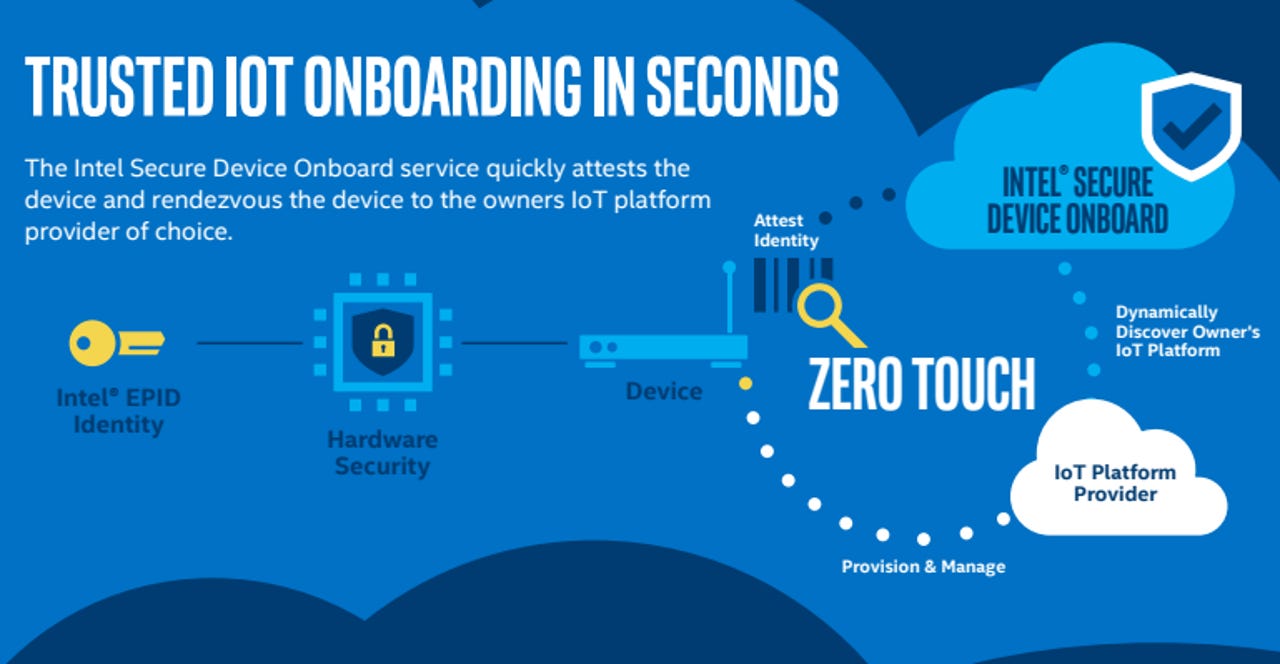Intel aims to scale IOT deployments with Secure Device Onboarding


The next few years should usher in a new era of connectivity, according to tech industry leaders and analysts. They've tempered their expectations, however, for just how many IoT devices will be connected by 2020.
Part of the problem, according to Intel, is that deploying IoT devices at scale is simply too time consuming. So as Intel seeks to transition from a PC company to one that powers the Internet of Things, it's launching a new product to facilitate large-scale IoT deployments.
At the IoT Solutions World Congress in Barcelona, Intel is introducing Secure Device Onboard (SDO), an automated service that securely brings IoT devices online within seconds rather than hours. Intel SDO is being offered to IoT platform providers as a service they can provide to customers.
"The whole industry's stagnant -- we're not growing at the pace we want to grow, as far as data and connectivity is concerned," Dipti Vachani, VP and GM of the IoT group at Intel, said to ZDNet. "We believe the opportunity is vast, but it's just about scale."
Intel has the unique ability, she said, to work across ecosystems -- with consortiums, open source communities and even its "frenemies" in the industry -- to enable that scale. Once that scale is reached and customers begin making money, Intel will make more money.
The SDO service starts with the Intel Enhanced Privacy ID (EPID) key, open-sourced IT used for anonymously authenticating a device and establishing an encrypted communication channel. It prevents hackers from tracing the device from the factory to owner. More than 2.7 billion EPID keys have been distributed in Intel and non-Intel MCU processors since 2008. So to support SDO, other silicon providers like Infineon, Microchip, and Cypress Semiconductor will embed the EPID identity capability in their hardware.
"This is hardware secure," Vachani said. "It's in the silicon, which is a lot more robust than solutions out there today... It's in the trusted execution state, you can't modify it along the way."
Then, the SDO service quickly attests the device, and it connects the device to the owner's IoT platform provider of choice. The SDO service dynamically discovers the customer's IoT platform account once it's powered on, creating a "zero touch" automatic registration process. It eliminates the need to custom pre-load provisioning configurations for each IoT implementation.
Cloud service and device management providers like Google Cloud Platform, Amazon Web Services, Microsoft Azure, and Intel's own Wind River Helix Device Cloud intend to provide integration to support SDO.
"The problem we're solving here is we're connecting the ecosystem," Vachani said.
PREVIOUS AND RELATED COVERAGE
Intel launches new IoT retail platform, plans $100 million retail tech investment
The platform works to bring together retail hardware, software, APIs, and sensors in a standardized way.
Intel puts former ARM exec in charge of its IoT group
Tom Lantzsch will lead Intel's Internet of Things unit, with the aim of boosting the chip giant's footprint vs. his old employer.